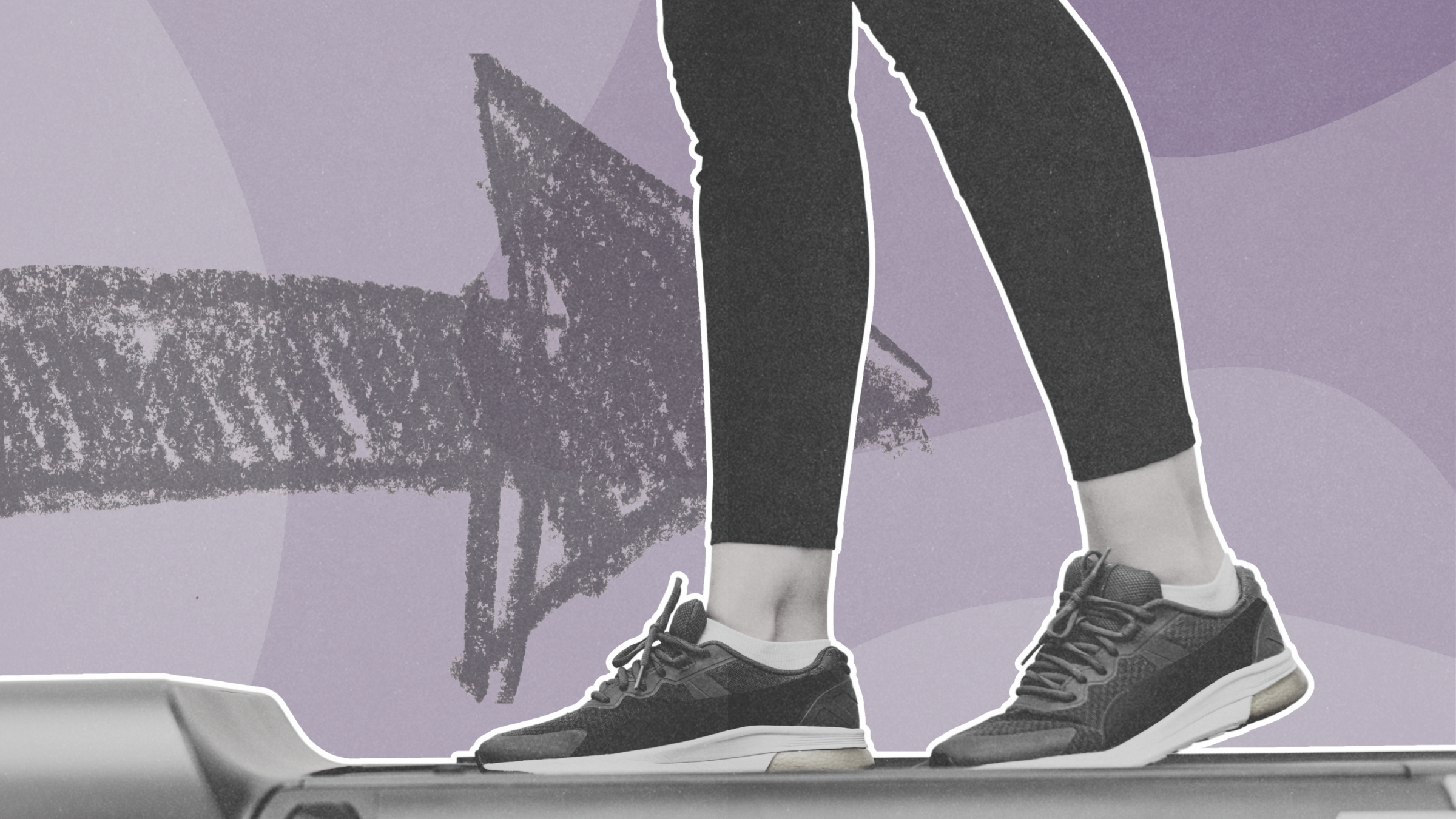The Viral Treadmill Workout for Knee Pain, Explained by a Personal Trainer

(Photo: Treadmill: Believe_In_Me/Getty; Design: Ayana Underwood/Canva)
If you’ve ever felt that oh-so-devastating twinge under your kneecap during your training, you’re not alone. Patellofemoral pain syndrome—commonly referred to as runner’s knee—is one of the most common knee pain conditions reported among recreational runners, according to a 2023 study in Physical Therapy in Sport.
A viral video by fitness coach @alpha_sash has been making the rounds on TikTok, claiming that slowly walking backward on the treadmill on an incline for ten to 15 minutes will relieve your pain and fix the underlying problem causing it. While you can’t trust everything you see on social media these days, this workout is legit, according to Alison Marie Helms, a certified personal trainer and running coach.
We asked Helms to break down why this treadmill workout does the trick, plus how to do it safely.
How Walking Backwards on a Treadmill Eases Knee Pain
“Walking backward offers quad-strengthening that studies have suggested may be beneficial to those experiencing knee pain,” Helms says.
For instance, a small 2019 study published in BMC Musculoskeletal Disorders had one group of participants walk forward for ten minutes three days a week for six weeks. The other group walked backward for the same amount of time. The group that followed the backward-walking program had a greater reduction in knee pain intensity and more quad strength than the group that followed the forward-walking program.
Your Quads Get More Support
This is because the toe-to-heel movement of your feet during backward walking (as opposed to the heel-to-toe movement of forward walking) engages your quads. Because the quads help support your knees, they absorb impact as you walk, according to the Cleveland Clinic.
“Many people who struggle with knee pain also struggle to load the foot well—rolling of one side of the foot or the other, for instance,” Helms says. “Walking backward, landing first on the big toe and rolling back onto the whole foot, can help retrain more natural foot mechanics.”
How to Do It
While walking backward on a treadmill may sound simple enough, Helms has a few specifics you should follow. Feel free to tweak these metrics based on what feels best to you.
- Set your treadmill to 2 mph or less with an incline of around five percent.
- You can start with as little as three to five minutes on the treadmill and work up to ten to 15 minutes over time.
(In the video below, Ali Nolan, the digital editor on one of Outside Online‘s sister sites, RUN, shows you exactly how to do it.)
Helms suggests doing this workout 2 to 3 times a week as a warm-up before your run or strength-training session.
Safety Tips to Keep in Mind
Walking backward isn’t a natural movement, so it can be a bit tricky at first. Helms suggests holding onto the rails of the treadmill until you’ve settled into a natural rhythm. Take it slow, and stay toward the top of the treadmill (closest to where the controls are) to avoid falling.
What If You Don’t Have a Treadmill?
If you don’t have a treadmill, no worries—you can still do this workout. Helms suggests finding a hill that’s around a five percent grade in a safe place (no traffic, obstacles, or tripping hazards). Walk backward up the hill four to five times for 30 seconds each.
If you don’t have access to a hill, a backward sled pull will also do the trick. Wrap a strap around your waist, attach it to the sled, and walk backward, dragging that load four to five times for 30 seconds each.
When to Walk Backwards—and When to Avoid It
If you’re a conscientious runner looking to prevent knee pain, it might be worth adding some backward incline walking to your strength training routine. If you’re in the throes of knee issues, this method can work for people who have knee pain, such as runner’s knee or osteoarthritis.
The symptoms of runner’s knee are:
- A dull ache in or around the kneecap
- Stiffness or tenderness in the knee joint
- Pain when squatting, walking downhill, or walking after prolonged periods of sitting
The symptoms of osteoarthritis are:
- Pain when moving the knee joint
- Stiffness in the knee joint upon waking
- Swelling around the knee joint
- Looseness or instability in the knee joint
If this sounds like your knee issue, and the pain is mild enough that you can still run, then this remedy might be a great first step in rehabilitating your knee. Note that because the stimulus from walking backward is very low, you may need to level up your strengthening routine to bulletproof your knees for the distances you want to tackle.
“You’ll need to load that pattern with a bigger stimulus to get lasting change,” Helms says. “More traditional strength training using squats and lunges is probably more effective at strengthening the quads. The key is to actually allow the knee to travel over the toes and build up capacity there over time.”
Of course, not all knee pain is runner’s knee or osteoarthritis, which is why it’s always a good idea to get a professional opinion before attempting to fix the problem yourself. If you have sharp pain, tenderness that won’t go away, or discomfort that’s impacting your gait, step away from the treadmill and call a medical professional, like a physical therapist or sports doctor. They can provide an individual treatment plan for you and ensure your knee heals properly.
Want more Outside health stories? Sign up for the Bodywork newsletter.